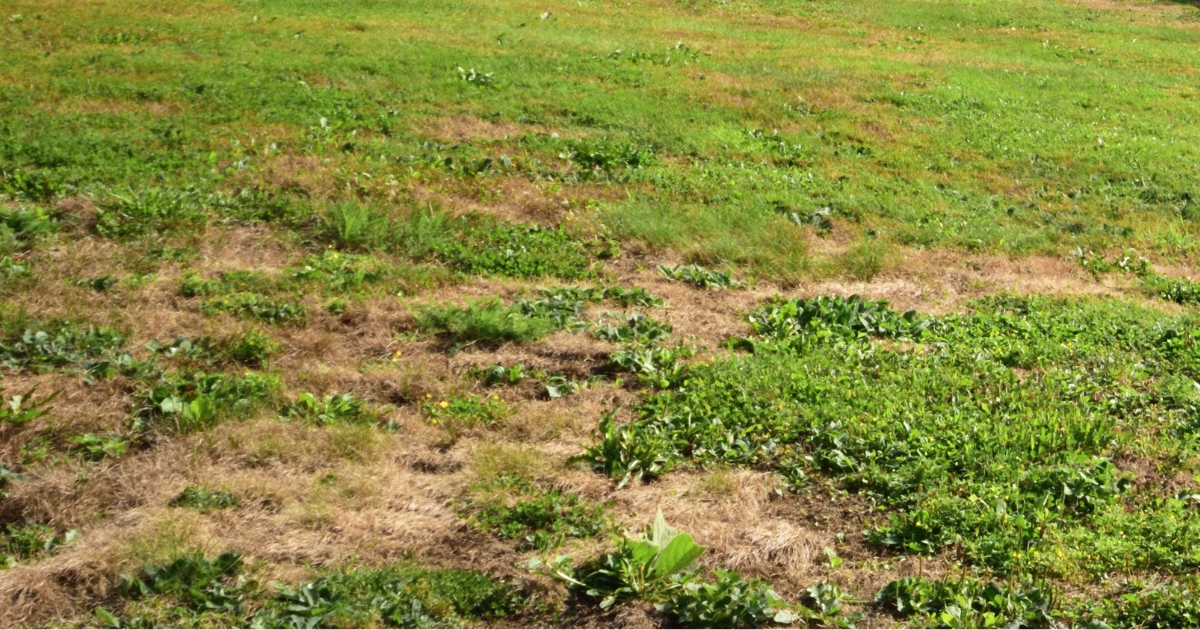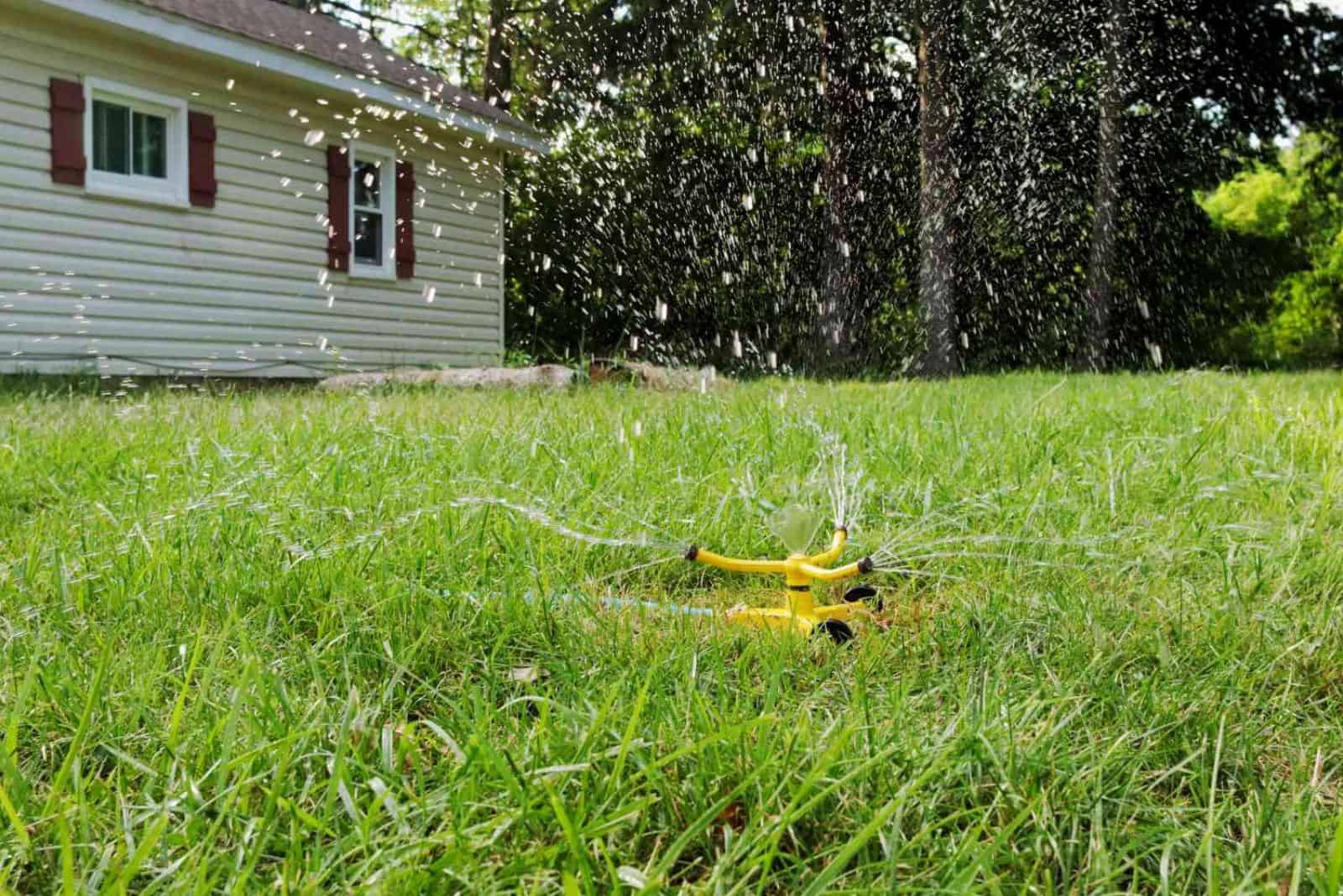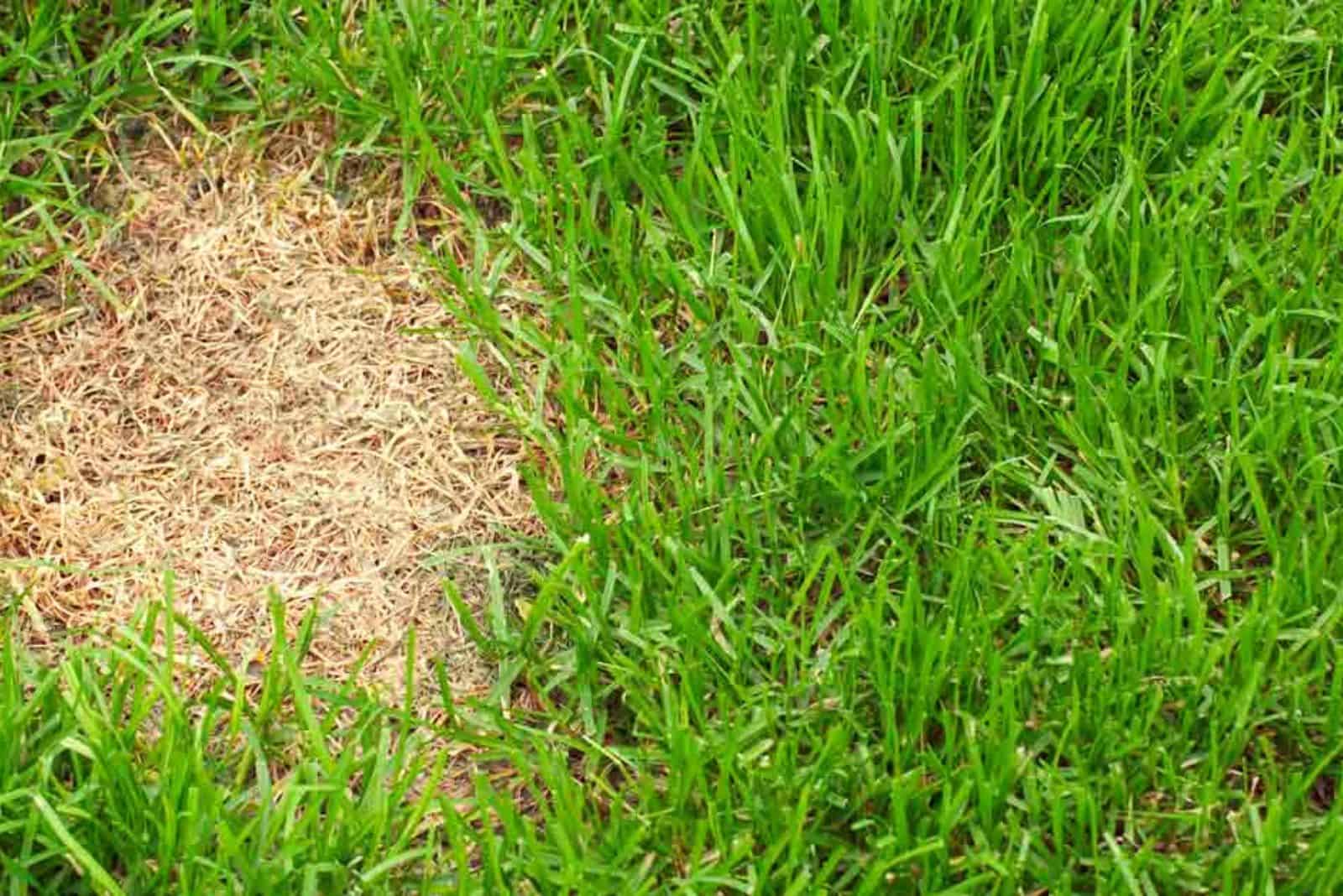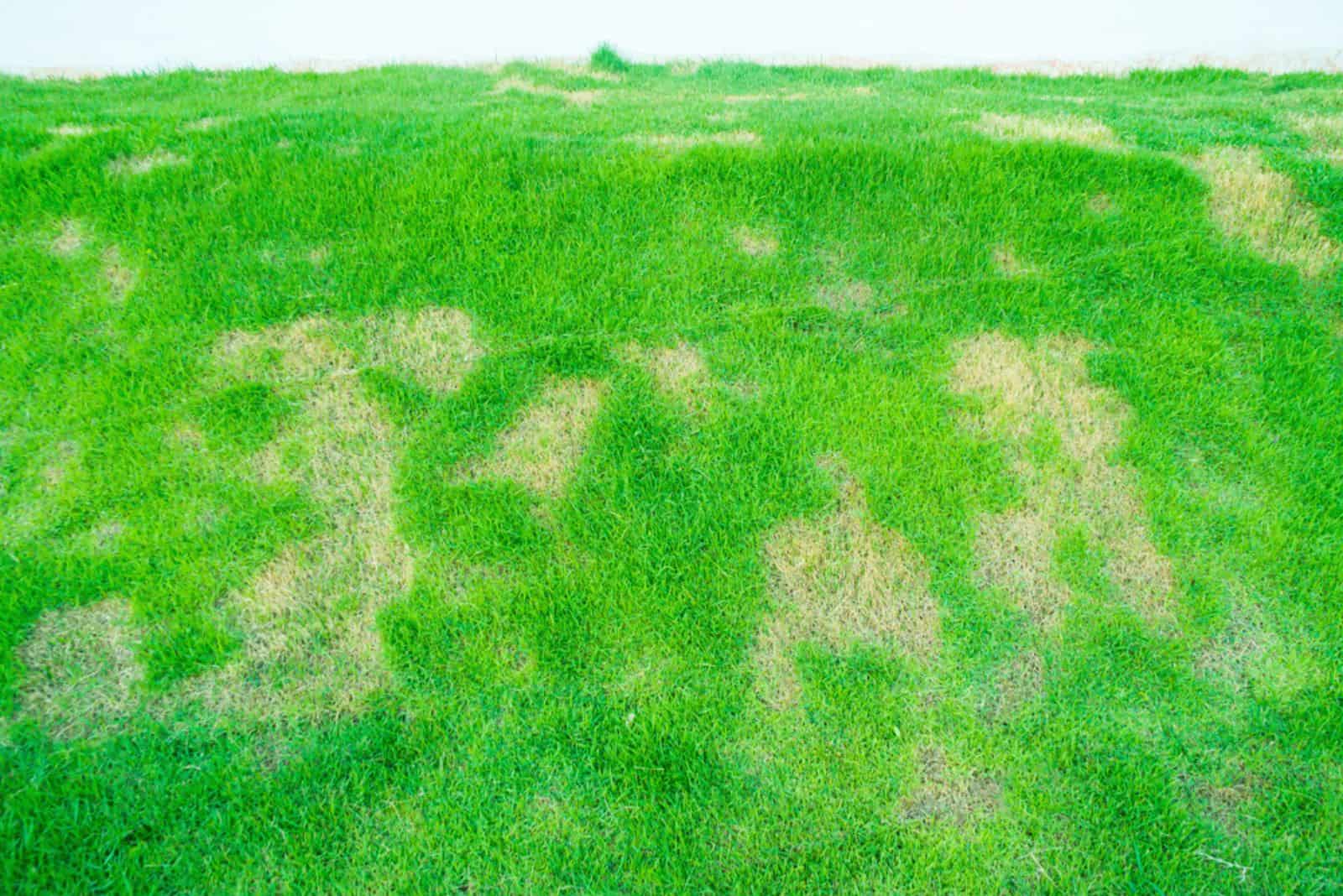Having bare patches on the property is one of the worst things that can happen to a homeowner who puts a lot of time and effort into lawn maintenance.
But don’t let this discourage you! In lawn care and gardening in general, some minor mistakes can lead to issues but it’s important to realize what we’ve been doing wrong.
So, I’ll show you both the causes and the best ways to heal ugly bare patches in your yard.
Let’s get started!
1. Change The Watering Schedule
We all know that we need to water our plants to encourage growth. However, many lawn owners, especially beginners, irrigate their grass constantly, hoping it will increase plants’ growth rate.
Well, that isn’t really how it works. Too much water can inhibit grass growth and will do more harm than good. In most cases, grass seeds won’t germinate if you overwater the soil.
If you’ve been irrigating with force and a stream of water that’s too strong, grass seeds will have been washed away, causing bare patches to occur.
Some lawn owners are well aware of the consequences of overwatering and they stop watering or water rarely. This isn’t a good approach, either. Some seeds will survive but the ones that lack water won’t germinate, and you’ll have patches in these spots.
If you determine that poor watering habits caused the patches, you need to reseed and water your young grass lightly and frequently. The soil should be moist but you should never allow the water to accumulate.
With this approach, you can grow grass in bare spots in approximately 2 weeks.
2. Loosen The Soil
Some yard owners believe that poor soil types lead to bare patches on the lawn. It’s true that poor soil causes stunted growth of grass or no growth at all.
But, if the grass that emerges looks healthy even though there are some patches, soil quality has nothing to do with it.
It’s actually related to compact soil as the seeds may not have the necessary contact with the soil surface. If you’ve only scattered the seeds without preparing the soil, it’s possible that some didn’t have adequate contact with the soil, and consequently did not germinate.
The first thing you need to do when starting a lawn is prepare the soil. This isn’t rocket science and all you should do is gently go over the soil with a garden rake to loosen the compact upper part of the soil.
After sowing the seeds, work them into the soil using the rake or even your hands.
3. Protect Your Yard From Animals
If you’re a dog owner, I’m sure you enjoy watching your furry friend playing on your lawn. This may come as a shock to you but if there are patches on your lawn, your dog can be a culprit.
It’s actually dog urine that can cause patches because it has high nitrogen content. (1)
Dogs aren’t the only animals that can damage your lawn. Rodents are big fans of grass seeds and they can even cause small holes in your lawn.
The easiest solution is to install a fence around your property; mesh wire will do the job. When it comes to your furry friends, you can water the spot and it will flush the urine out. You can also put pea gravel somewhere on the lawn for your dog to go potty.
4. Planting Schedule
Sowing grass seeds in the spring when soil temperatures rise will give the best results. Remember that seeds can’t germinate once the temperatures increase significantly.
Some will survive, but you’ll most likely have a lot of bare patches in your yard.
So, before you start your grass, pay attention to the time of planting.
5. Ensure More Sunlight
If bare patches appear on your lawn and you have trees nearby, your grass most likely doesn’t receive enough full sun.
Simply put, in the battle of grass vs tree growth, trees will always be the winners.
What to do? Pruning your trees is a potential solution. If this isn’t possible, you can remove your trees. Well, this doesn’t sound like a good option because trees take a lot of time to grow, they’re beneficial, and look amazing in yards.
If your lawn is in a very shady location, there’s really nothing much to do. It’s best to accept it the way it is.
6. Go With Sod
Many lawn owners decide on sod instead of grass seeds since it requires less maintenance. It’s a pricey method but the good news is that you don’t have to buy the entire palette.
Some nurseries sell rolls of turf so try contacting the ones around you to check if they have this option.
If you have turf somewhere in your yard and that area is hidden from view, you can take a piece of it to cover the bare patches in visible spots.
Take a shovel and dig out the turf but make sure you take out the root system. Now, prepare the spot where you’re transplanting turf.
Ensure it’s level and if there are any pieces of old sod or some thatch, take them all out because new sod must have adequate contact with soil.
One of the best things about sod is that it doesn’t require as frequent irrigation as grass seeds. Once you put the new sod, water it approximately twice a day for about a week or until it’s well-established.
Make sure you don’t waterlog the soil because the sod can’t survive if it sits in pools of water. Once the new sod is fully established, you can irrigate according to the usual schedule.
If you have bare patches in your yard, start by determining what caused them. Then simply use our guidelines to fix it and you’ll have a lush lawn in no time!
References
1. Why Does Dog Urine Stain the Grass? (n.d.). Office for Science and Society. https://www.mcgill.ca/oss/article/you-asked/why-does-dog-urine-stain-grass#:~:text=Dog%20urine%20contains%20a%20variety,grass%20around%20the%20yellow%20patches.




